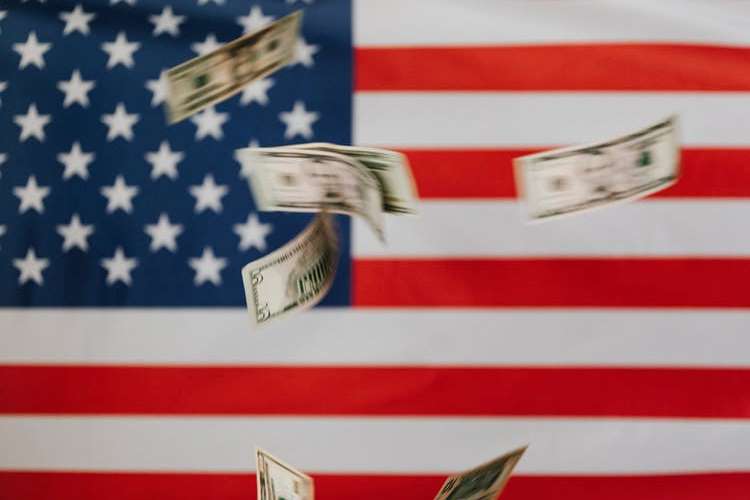Taper Myths – Don’t Let Them Cost You Money!
- –The Fed can’t taper Quantitative Easing without really hurting the market.
- –Tapering of QE will signal a shift by the Fed to tighter monetary policy
- –Tapering will signal the end an era of Fed ease and the onset of higher inflation and interest rates, the market’s eventual downfall.
- –The “Worst” case and what happened to stocks, 1974 and 1982 — the myth-buster

The Fed can’t move to a neutral stance (taper QE) because rates will rise and the market will weaken and fall.
“The Federal Reserve’s ‘taper talk’ could keep markets on edge through the summer.”

What to do?
This is probably one of the lamest attempts yet from the folks at CNBC to generate concern and garner clicks and viewers. It shows that they have no idea of what they are talking about or that they are intentionally omitting factual perspective that, when given, would tend to calm people down.
I would just define for the moment a neutral monetary stance to be the discontinuance of The Fed’s monthly purchase of $120 billion worth of longer-dated treasury securities and CMOs (collateralized mortgage obligations). This is better known to most as Quantitative Easing, an emergency program taken on as we emerged from the financial crisis a decade ago. The idea was that the Fed, as a constant buyer in the market, would keep constant downward pressure on rates while building its balance sheet to support bank lending.
Has it been a success? That is a good question. Yes, interest rates have remained incredibly low, but was it the Fed’s doing?
When you say you’re going to buy $120 billion worth of bonds every month that sounds formidable, especially when you don’t provide any context. If you don’t provide it, the media is not going to step up and do that. Perspective is not their business these days. In my opinion the biggest benefit of QE has been psychological … yes psychological!
QE … a drop in the bucket

In the grander scheme of things the monthly $120 billion capital injections have been drop in the bucket. They have been a drop in the bucket going into the market and they will be a drop in the bucket coming out (heaven forbid if they ever try to take it out!)
Why so? Daily trading volume in the longer-dated (6 years and out) treasury securities averages over $200 billion per day. In a 20-day trading month that works out to $4 trillion dollars. $120 billion QE would be an incremental demand of roughly 3%(a drop in the bucket). You may verify these stats at sifma.org (Securities Industry and Financial Markets Association). I would assert that if they ended the program, cold turkey, tomorrow and did not announce it, no one would realize it was gone. Rates would not budge.
Of course it is not going to happen that way and there will be a negative pundit/media firestorm. You can see this happening already in the CNBC headline re: “taper talk” above and in this piece from Barron’s: “The Fed Might Start to Act Sooner to Head Off Housing Boom and Bust. What Could Happen.” (you need WSJ or Barron’s subscription to access)
In the event this comes about rates may go up for a while if the fear/ flight-to-safety buying doesn’t push them down. This a learned response. The media has taught people to fear higher rates (again with zero perspective) and it is people who program computers (computers that do most of the trading these days) to react the same way (Sell). My bet is on the flight-to-safety gang. I would also bet on investors around to world who may be enjoy negative rates. They will continue to put downward pressure on our rates until their central bankers get the message that the apocalypse has been avoided.
Tapering of QE is a shift to normal not tightening
Remember that all of this Fed intervention was in reaction to the emergency situations that developed in 2008 and during the pandemic. The economy is very strong right now. We simply do no need rates this low or a Fed balance sheet that is so expansive. The emergency is over! It will be a sign the economy is very strong.
“Banks have been stuffed with deposits, while they have been “starved for loan growth,” notes J.P. Morgan’s (Alex) Roever. So they’ve been forced to put their cash to work in high-quality assets to generate some net interest income. Over the next year, agency MBS yield spreads could widen by 20 to 30 basis points over benchmark Treasuries, he estimates. Once the Fed fully withdraws from the market by halting the reinvestment of monthly interest and principal payments, an additional 20 basis points could be added to that.” (Barron’s 5/21/21)
BTW, a 20 basis point increase in spreads is also a drop in the bucket.
The end of an era
To my third bullet point above, “the end an era of Fed ease,” I say “not so fast.” Coming out of an emergency going back to normal does not signify anything other than that things are much better. In fact what you may see is at the first signs of a ‘taper tantrum’ that the Fed loses its resolve. The Fed backing off its plan at the first signs that the market is roiled has been what happened before. Frankly that is pretty discouraging.
Also in stockbroker school one of the first thing that they teach you is the common stocks are are a great hedge against inflation. There is a long history of data that would attest to this fact. For the equity asset holder inflation is a plus.
The ‘Worst” case and what happened to stocks (1974 to 1982)

Looks like bad news
I call this period the worst case for inflation and interest rates because it was absolutely the worst environment for these two elements that I ever experienced in my lifetime and I cannot find any historical president. Buckle your seatbelts!
The average yield on the 10-year US Treasury note in 1974 was 7.56% with CPI inflation averaging 11% (1st Arab oil embargo). Between 1974 and 1982 CPI inflation averaged 9.13%. The yield on the 10-year Treasury peaked at 15.8% in September of 1981. It averaged 13.9% in 1982. We were at the beginning of the greatest secular bull market on record.
Here is the punch line: “And stocks went up!
Between December 31, 1974 and December 31, 1982 the Dow Jones Industrial average rose from 616.24 to 1046.54 (70%)
Bottom Line on the myths: Our economy is doing fine and will be easily able to handle higher rates. Do not let the media talk you out of investments on what I perceive to be a well-hyped but totally inaccurate myth.
BTW, we’ve seen this movie before: "DreadedTaper" (kortsessions.com June 7, 2013)
Disclaimer: The information presented here represents my own opinions and does not contain recommendations for any particular investment or securities. I may, from time to time, mention certain ...
more


